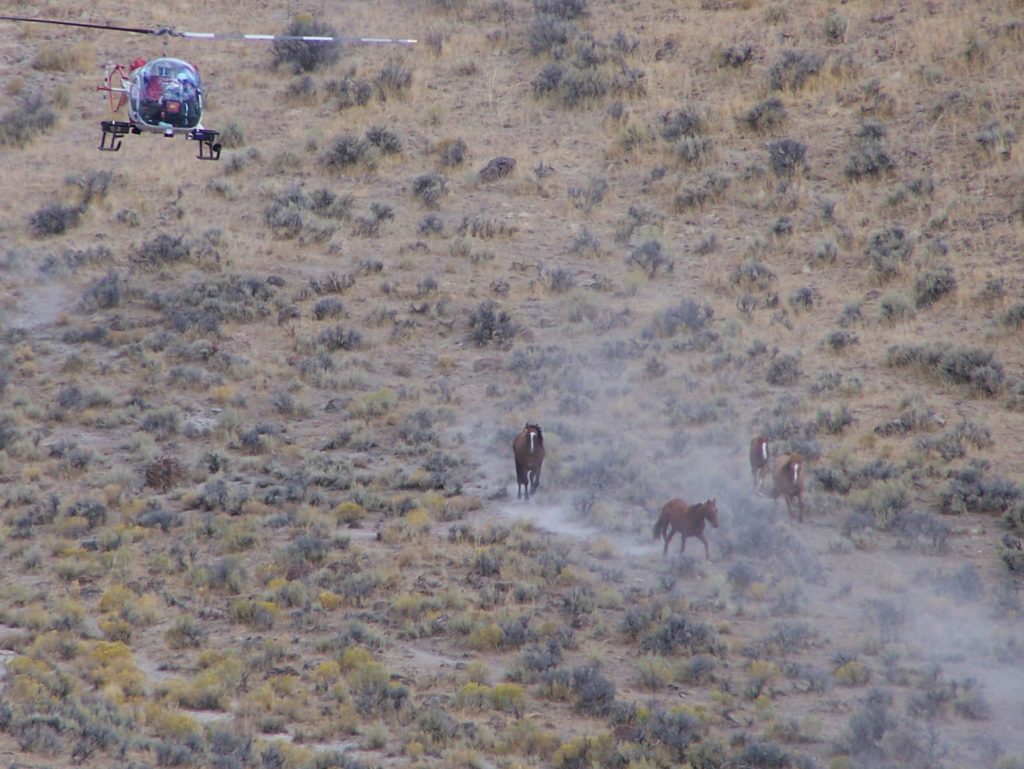Keep Dirty Politics Out of Wild Horse and Burro Lives!
 In 2017, the BLM’s war against wild horses and burros escalated further with the current administration proposed “cut and kill” policy to manage wild horses and burros of the West.
In 2017, the BLM’s war against wild horses and burros escalated further with the current administration proposed “cut and kill” policy to manage wild horses and burros of the West.
With overcrowded government holding facilities and plans to decrease the BLM’s budget, opponents of wild horses increased political pressure to allow unlimited sale, mass killing and slaughter of at least 44,000 wild horses.
The U.S. House of Representatives approved this measure in its version of the U.S. Department of Agriculture’s proposed budget bill. The U.S. Senate did not include approval in its version of the same budget bill. Both bills must be reconciled before a new FY2018 federal budget can pass.
At this time, the FY18 budget bill has been delayed numerous times for a final vote. But the current administration’s suggested budget bill for Fiscal Year 2019 (FY19) would allow the destruction of wild horses.
The BLM claims its holding facilities are beyond capacity and its largest expense is to feed captive horses. Ironically it continues to remove horses (and burros) to the tune of millions of dollars in taxpayer money keeping its cycle of budget crisis going.
Winter roundups to date have resulted in dozens of injured horses with at least 13 deaths by early February. Witnesses to brutal winter roundups have documented horses in very good body condition which contradicts the BLM’s ongoing excuse of “starving on the range” as a reason for roundups.
It is up to the American public to stand up for wild horse and burro protections allocated to the horses by law. Congress needs to hear from voters that they oppose any legislation which allows unlimited sale, mass killing or slaughter of these national treasures, our icons of the West.
The BLM’s budget should focus on appropriate management on the range strategies, increased public-private partnerships, expanded safe/effective population control (PZP use) and gentling programs to help increase adoption rates and success for captured horses.
